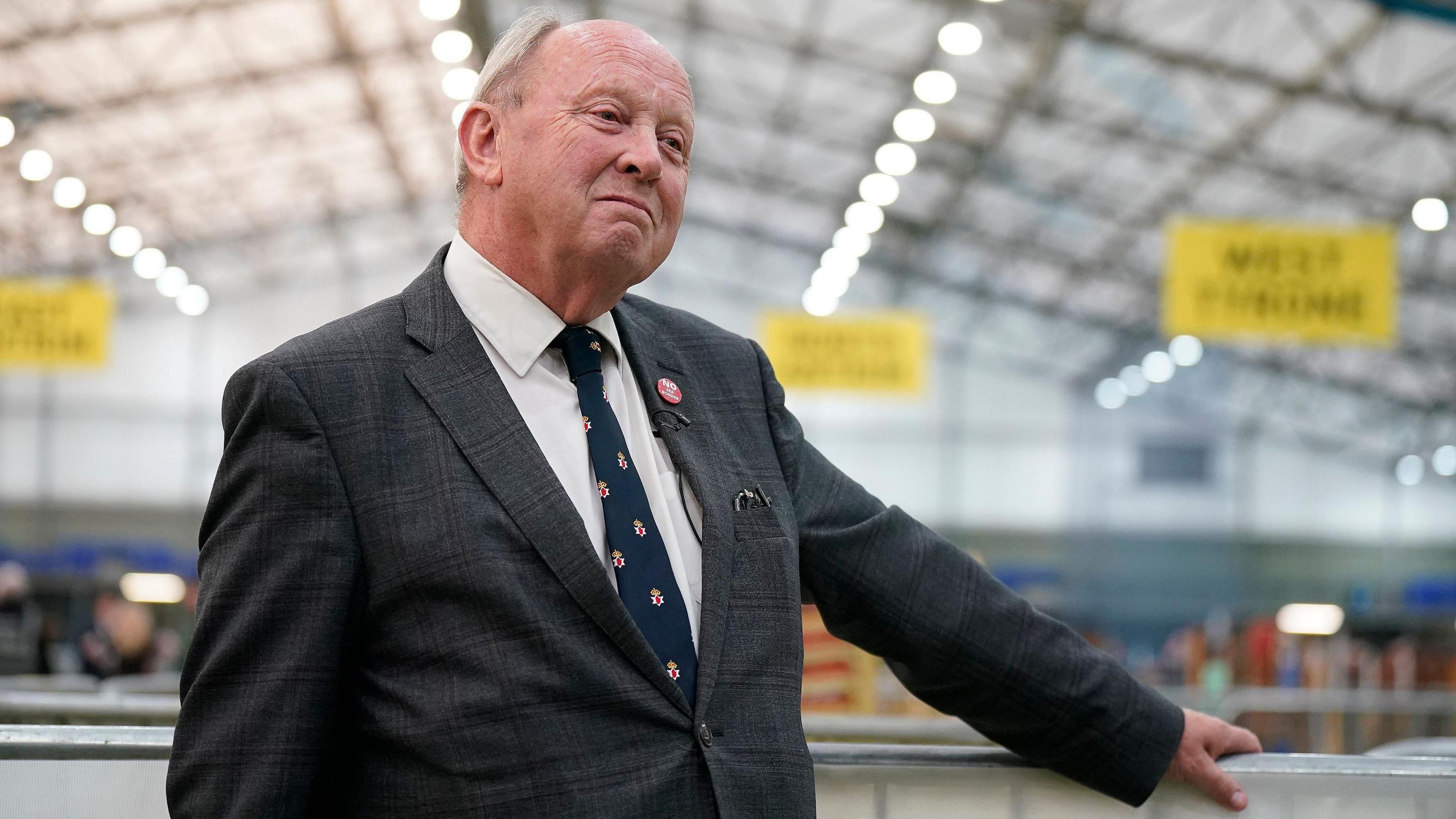Aftershocks of election being felt in Northern Ireland

Voting slips being emptied from a ballot box at the Craigavon count centre
- Published
The "earthquake" may have passed but the aftershocks are still being felt right across Northern Ireland's political landscape.
It was the most dramatic of outcomes to a most undramatic election campaign.
Now the parties have started to look beneath the surface to understand why the plates moved and to assess if the new fault lines are permanent.
But they will be mindful about over-analysing the results when so many other factors came into play.
Firstly, the turnout of 57% was the lowest in the history of Westminster elections.
A July snap election - peak holiday period - was always going to drive the numbers down.
Only three constituencies had a turnout in the 60s while others struggled to get above 50%.
Boundary changes also played a key role in shaping the final result as voters headed for new polling stations and a new list of candidates.
While the Richter scale did jump on Thursday in some constituencies, the Westminster needle shows little over all change.
The nationalist vote increased from 40.1% to 40.4% while the unionist vote has dipped from 43.2% to 43.1%.
There is also no change on the green benches - with nine nationalist MPs, eight unionist MPs and one Alliance MP.
But there is the potential for greater change.
Largest party
Sinn Féin is now the largest party at Westminster without breaking any sweat.
Though it didn't add to its seven seats, it increased its vote to 27% despite not fielding candidates in four constituencies.
It also claimed 67% of the overall nationalist vote and in the process pushed the once marginal seats of North Belfast and Fermanagh South Tyrone beyond the reach of unionists.
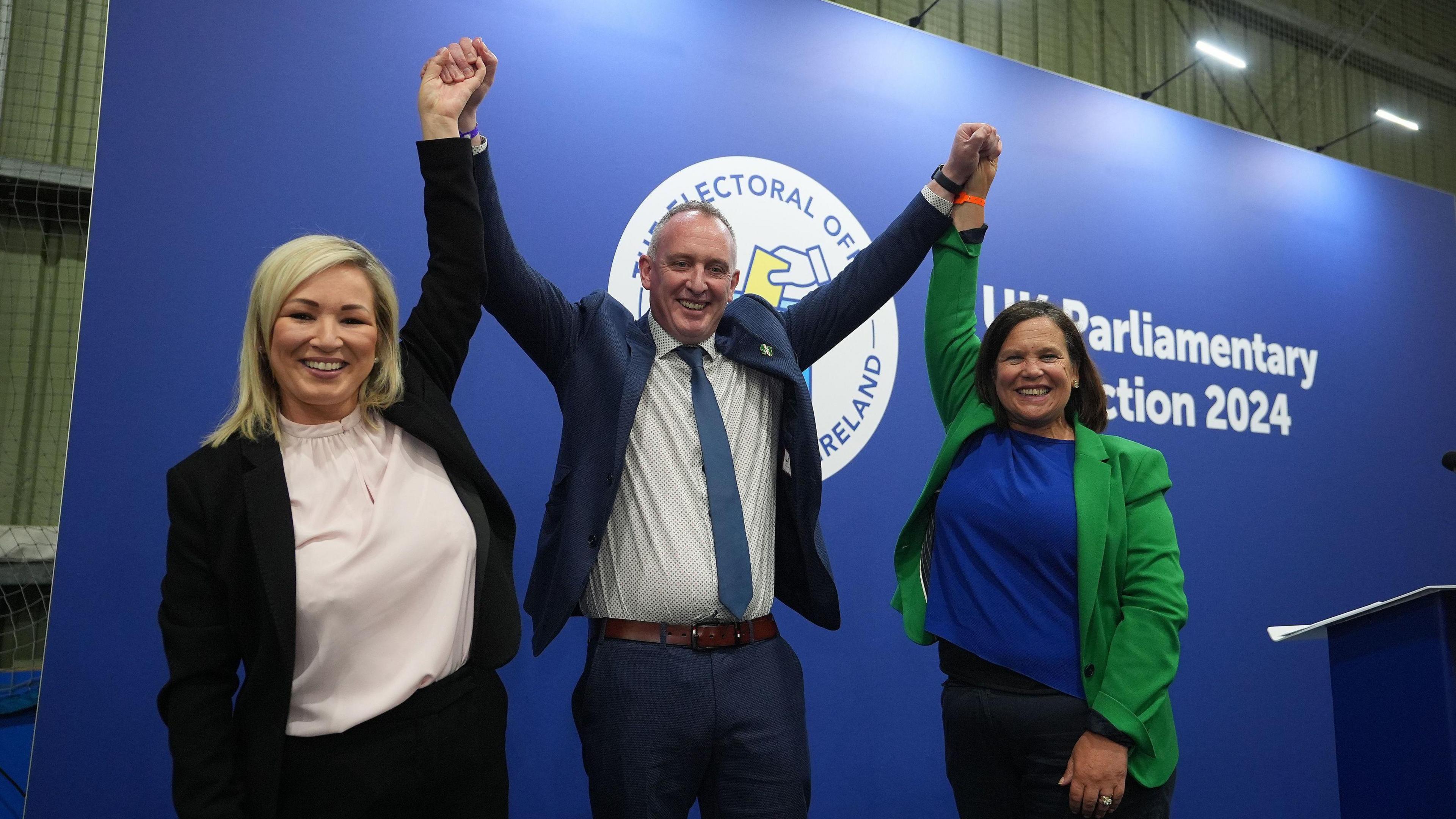
Sinn Féin MP for Mid Ulster Cathal Mallaghan celebrates his election with Michelle O'Neill and Mary Lou McDonald at Magherafelt
Sinn Féin tightened its grip in South Down and recovered lost ground in Foyle, where the SDLP majority has been greatly reduced.
But most strikingly it is closing in on what were once considered safe DUP strongholds - like East Londonderry.
Kathleen McGurk came within 179 votes of taking the seat from Gregory Campbell - who had a majority of more than 9,000 votes - though more unionist candidates were in the race this time.
Expect that to become a top target for Sinn Féin next time round and don't be surprised if the party adds another assembly seat at the expense of the SDLP.
Jim Allister impact
Sinn Féin is already plotting its next moves while the DUP is in full crisis mode.
Losing three of its eight seats was a crushing blow and will see the party returning to the green benches this week without a Paisley in its ranks for the first time in more than 50 years.
However, the pain has been softened slightly by the removal of its most ardent opponent Jim Allister from the blue benches at Stormont.
Though it was the most eye-catching result on the night, the DUP vote in North Antrim had been falling and the TUV was in the best position to strike.
Despite what its opponents said, the TUV's presence on the ballot paper did not cost unionism a seat by splitting the vote.
In Lagan Valley, the TUV candidate polled less than Sorcha Eastwood’s winning margin.
But the TUV did come within 179 votes of being accused of costing Gregory Campbell his seat in East Londonderry.
Jim Allister will now team up with the five Reform MPs at Westminster but he may struggle to be as effective as he was at Stormont.
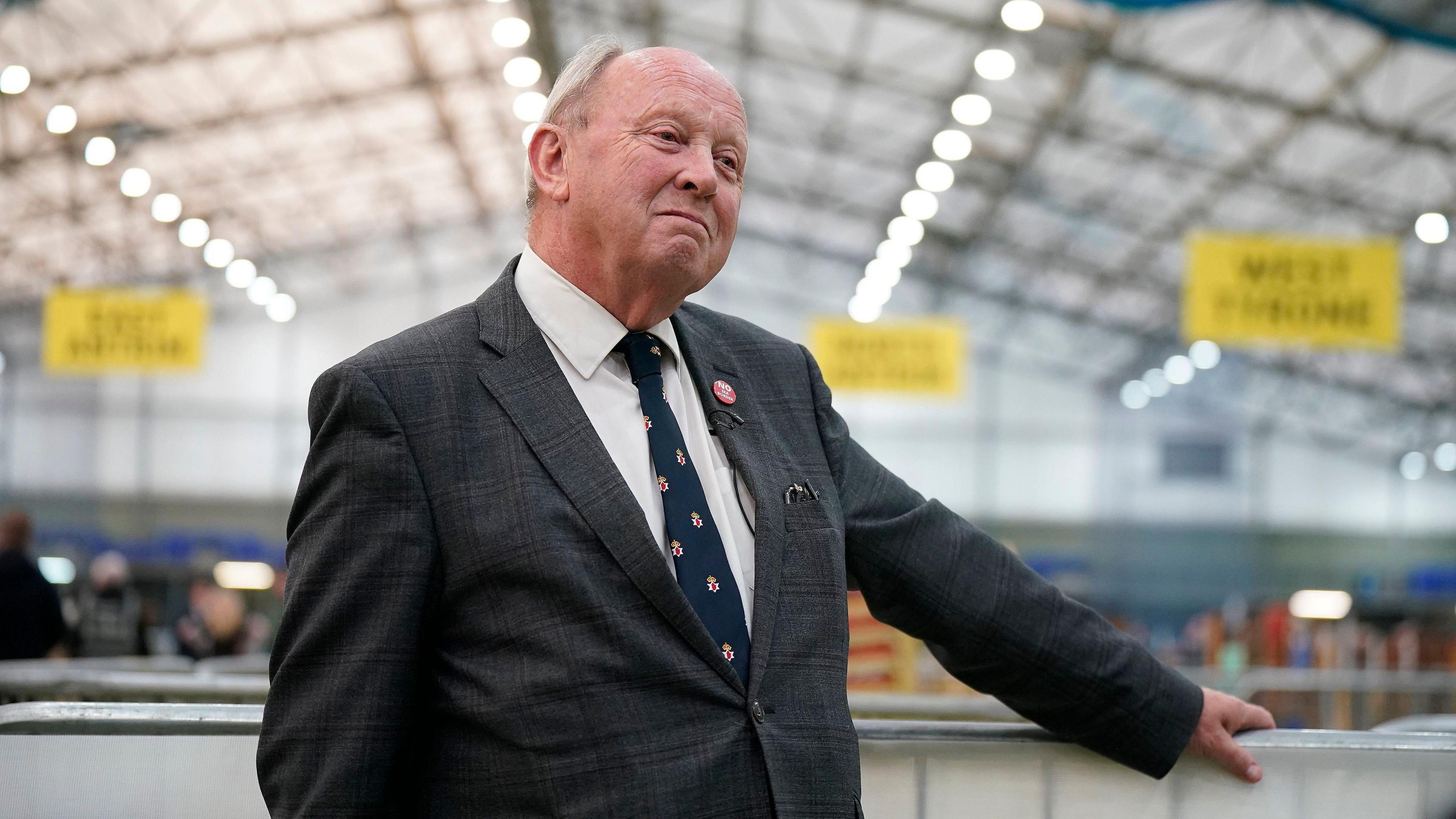
TUV leader Jim Allister won the Westminster seat in North Antrim
Alliance take Lagan Valley
Losing Lagan Valley to a non-unionist for the first time in the constituency’s 40-year history was just as painful for the DUP as losing North Antrim.
Sorcha Eastwood turned a 6,500 vote deficit into a 3,000 vote victory.
Her popularity pulled in votes from the across the political spectrum as she cashed in on tactical voting from nationalists and increased support from unionist areas.
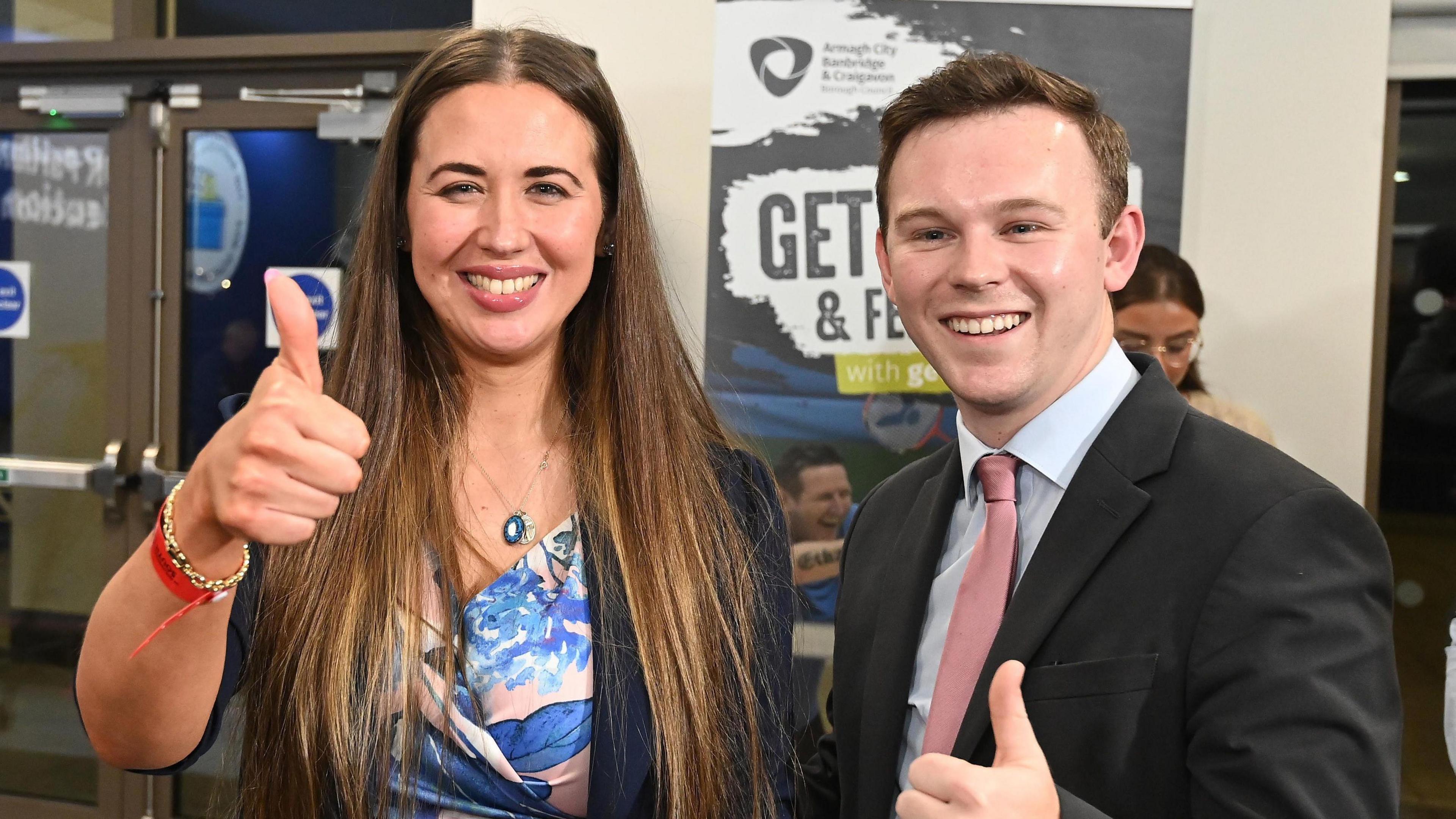
Sorcha Eastwood celebrating with Eoin Tenneyson MLA at the South Lake Leisure Centre in Craigavon
Ms Eastwood's brand of politics struck a chord while the DUP camp struggled to emerge from the shadow of Sir Jeffrey Donaldson.
The circumstances of his shock departure from the party and appearance in court were the focus of almost every conversation on the door steps, according to DUP canvassers.
There was also no denying the sense of anger and frustration over the deal the party negotiated - and was accused of over-selling - to restore Stormont.
As a result, many DUP voters opted to stay at home or vote for other candidates.
This played well for the Ulster Unionists who, as expected, comfortably won back the seat in South Antrim.
It pitched its most high-profile candidate against the DUP's most low-profile outgoing MP and it paid off.
Tactical voters
Tactical voters may have helped the Alliance party to snatch a DUP seat in Lagan Valley but they deserted the party in North Down.
Those who helped Stephen Farry claim the seat when the Brexit battle was at its heights returned to their core political bases.
That cleared the way for Alex Easton to fulfil his lifelong ambition in becoming the latest in a long line of independent MPs in North Down.

Gavin Robinson secured the Belfast East seat
Alliance leader Naomi Long also lost out in a more crowded field as DUP leader Gavin Robinson stretched his lead over his long time challenger.
Though defeated, Ms Long appeared relieved to be returning to her job as Justice Minister and not to the back benches in Westminster.
It may be the last time we see the Robinson/Long showdown in East Belfast.
Finding common ground
Overall, the Alliance vote dropped by almost 2% which has stalled the party's recent surge. However, it will be encouraged by the performance in East Antrim where it has significantly closed the gap on the DUP.
For the SDLP, it was mission accomplished returning its two MPs who will now hope to bolster its support under a Labour government.
The cry for unionist unity will grow louder from those on the DUP benches.
They will point to places like Lagan Valley where the combined unionist vote was around 29,000 while a non-unionist candidate won with over 18,000 votes.
But adding up the figures is the easy part; finding common ground to bring the unionist parties to together remains a massive challenge.
To quote UUP Minister Mike Nesbitt, it will be "incredibly messy" but worthwhile.
That will be clear this week when four faces of unionism appear on the benches at Westminster - the DUP, UUP, TUV and independent Alex Easton.
- Published6 July 2024
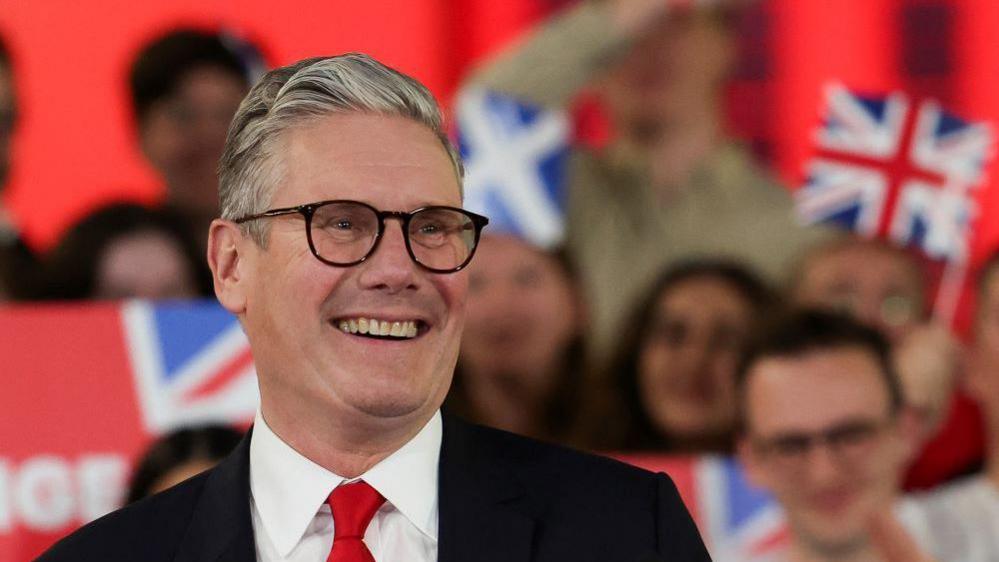
- Published5 July 2024

- Published5 July 2024
